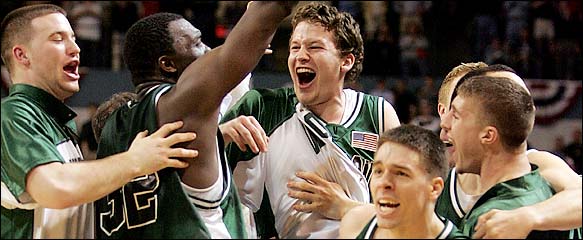Catching Up With the Pac-12’s 62 Current NBA Players
Posted by Andrew Murawa on October 28th, 2014The NBA tips off its regular season tonight, which for most college basketball fans means little more than just another sign that the college hoops season is imminent. But it is always nice to keep an eye on former college players that we grew to know and love way back when. With that in mind, we’ll take a quick spin around the Pac-12 today and briefly touch on what can be expected of each of their 62 former players currently on NBA rosters, as well as a handful who you won’t find. We’ll group these guys by their former schools, starting with UCLA — which has 15 alums playing in the league — down to the five teams in the conference with just two pros. One big question going forward: When will Arizona catch UCLA on this list. The Wildcats seem to be in the habit of transitioning several players on their roster right into the NBA, but with veterans like Jason Terry and Richard Jefferson playing on their last legs, it looks like UCLA can hold them off for a few more years considering that the Bruins have their own future NBA prospects to be excited about.
UCLA (15)
- Jordan Adams (Memphis) – After a last-minute decision to leave UCLA, Adams’ decision proved to be a good one as he was taken with the 22nd pick in the NBA Draft. He’s looking up the depth chart at vets like Courtney Lee and Tony Allen, but he’s been impressive enough that he could wind up stealing some minutes early.
- Arron Afflalo (Denver) – Last year, Afflalo knocked in 42.7 percent of his threes on the way to a career-high 18.2 PPG in talent-starved Orlando. This year he won’t score that much, but he has a chance to maybe help the Nuggets compete for a playoff spot.
- Kyle Anderson (San Antonio) – His role will fluctuate over the season on a roster filled with smart veterans, but expect Gregg Popovich to get this most out of this unique talent.
- Trevor Ariza (Houston) – He’s changed teams eight times in his now 11-year career, following the money around the league. But after winning a title with the Lakers, he’s finally back on a team with title aspirations again.
- Matt Barnes (LA Clippers) – Now starting his 12th season in the league, Barnes has made a name for himself as a tough, scrappy trouble-maker, the kind of guy you like if he’s on your team and hate if he’s on your rival.
- Darren Collison (Sacramento) – It seems like he’s been around the NBA for a lot longer than five seasons, and it seems like he’s played on more than just four teams. But, now on his fifth team in six years and fighting with Ramon Sessions for a starting spot: “Oh lord, stuck in Lodi again.”
- Jordan Farmar (LA Clippers) – A career backup, expect to see Farmar’s minutes dwindle even further this year as he sits behind MVP candidate Chris Paul.
- Jrue Holiday (New Orleans) – His first five seasons have been solid (14.3 PPG and 7.9 APG last year was considered a disappointment), but he hasn’t been to the postseason since 2012. Looking up the West standings at all those loaded teams makes it likely that he’ll miss out again. Who ever said New Orleans was in the West anyway?

Jrue Holiday and Anthony Davis Give Pelican Fans Reason For Excitement, But They’re In A Crowded West (Chris Szagola/Associated Press)
- Ryan Hollins (Sacramento) – Now starting his ninth NBA season, the seven-footer has made a nice career for himself as a spot-player off the bench.
- Zach LaVine (Minnesota) – The Wolves envision LaVine as a future point guard, but man, he’s got a lot of work to do. The good news is that Minnesota will be patient because the Wolves have no big plans to be competitive this season.
- Kevin Love (Cleveland) – After six years of excellence in obscurity in Minnesota, Love is now on the big stage playing alongside LeBron James with what looks to be a clear path to the NBA Finals. I can’t wait to watch Kevin Love make outlet passes in meaningful games again.
- Luc Richard Mbah a Moute (Philadelphia) – Entering his seventh NBA season, he seems to be on the downside of his career with injuries becoming more and more a part of his story over the last three years.
- Shabazz Muhammad (Minnesota) – Muhammad averaged 7.8 minutes per game in the 37 games in which he appeared last season (eight steals and six assists in a grand total of 289 minutes). The good news is that he’s on a team with little more to accomplish this season than to see if it has any players worth keeping, so Muhammad should see plenty of opportunities.
- Travis Wear (New York) – I looked up and down 30 NBA rosters and no name surprised me more than this one, but good on Travis. He’s 6’10”, can shoot the ball a little bit, and is a good fundamental player. Clearly Phil Jackson and Derek Fisher see something worth investigating here.
- Russell Westbrook (Oklahoma City) – With Kevin Durant on the shelf for a month or two, the Thunder are Westbrook’s team for the time being. If he can stay healthy while carrying the load, his career-high scoring average of 23.6 PPG could be in jeopardy.














































